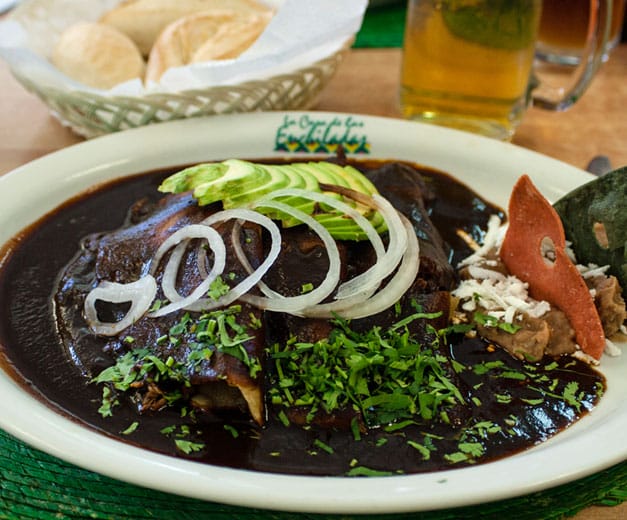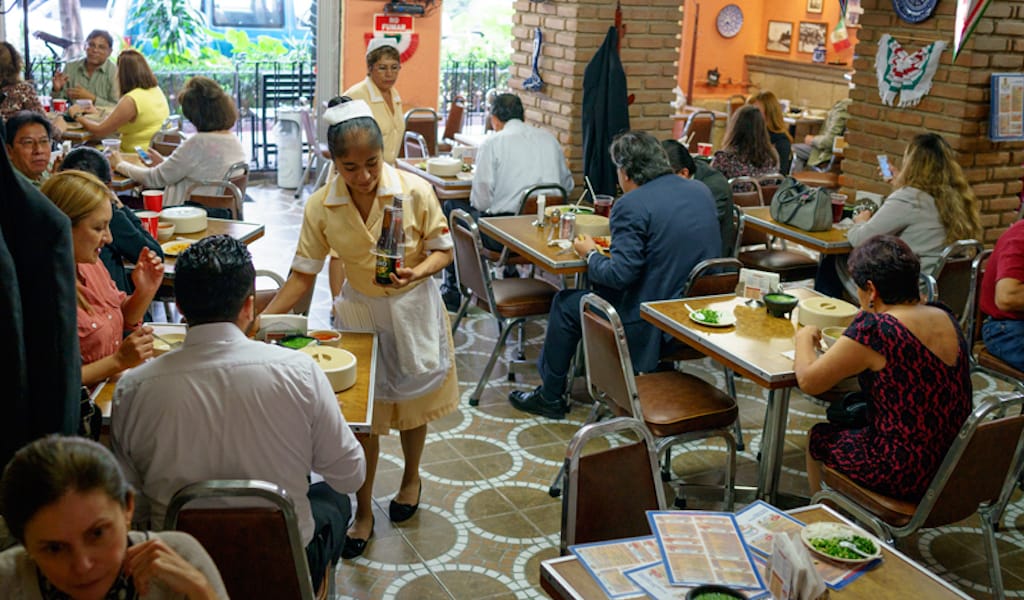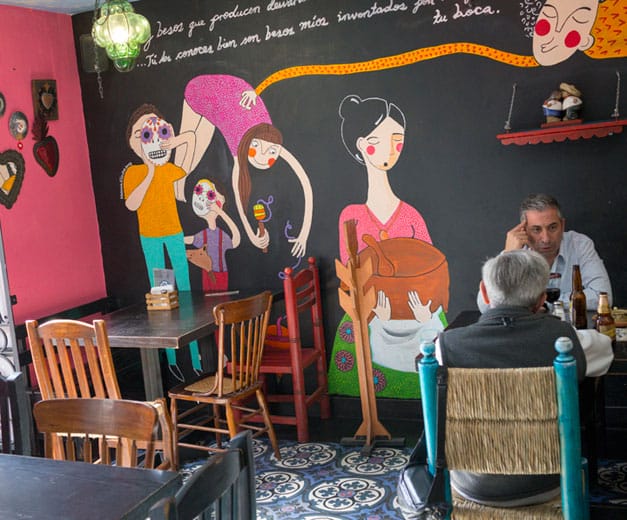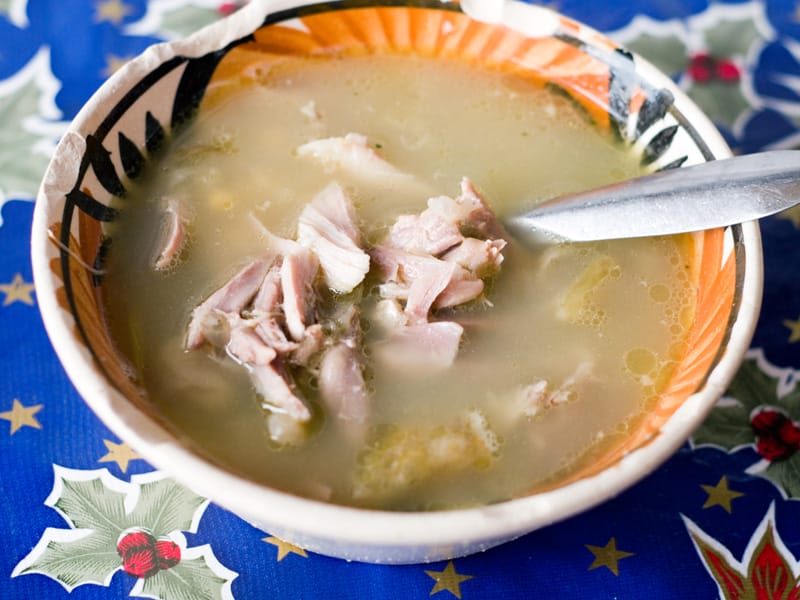Fried tortillas, stuffed and sauced: enchiladas are simple in concept, but they come in a seemingly endless variety, depending on region and ingredients. The tortillas might be made of corn or wheat flour, and they could be stuffed with all manner of meat or vegetables (or both), but the sauce – or salsa – is really what it all comes down to.
Most Mexicans, in fact, would agree that the salsa is what makes the difference between a mediocre enchilada and an amazing one. The more basic types are a red salsa made from tomatoes or a green one, made from tomatillos. Chilis – the word enchilada means “en-chili-ed” – are a personal preference for the cook (and for the eater, we suppose). They might be mild chiles de árbol, poblano or serrano or dried pasilla or ancho. Or they might be ratcheted up the Scoville levels to the very hot habanero, which happens to have a lovely fruitiness as well. That’s just for starters, though. Enchiladas can also be bathed in mole, which would make them enmoladas. In Mexico City, the mole is most likely to be the poblano kind, an inky concoction whose incredible complexity comes from upwards of 20 ingredients, including chocolate and many kinds of dried chili. Yet another variation of the enchilada is the enfrijolada, which is – you guessed it – covered in beans.
Because of all the possibilities therein, we were elated to find a build-your-own-enchilada eatery in Mexico City. At La Casa de las Enchiladas, customers can pick from blue, red and white corn, regular flour and whole-wheat tortillas, filling them with chicken, chicken with potatoes, turkey, three cheeses, beef, pork, shrimp, cecina (a kind of dried beef), arrachera (flank steak) or chorizo with potatoes. Besides the classic red and green, the salsas include the restaurant’s own mole recipe, as well as a green mole, enfrijoladas, chipotle, seven chilis, pasilla, encacahuatado (“en-peanut-ed”), and suizas, or Swiss, a green salsa made luxuriantly rich with sour cream and manchego. To top it all off, there is mild canasta cheese, red or white onion, cilantro, sour cream and sesame seeds.
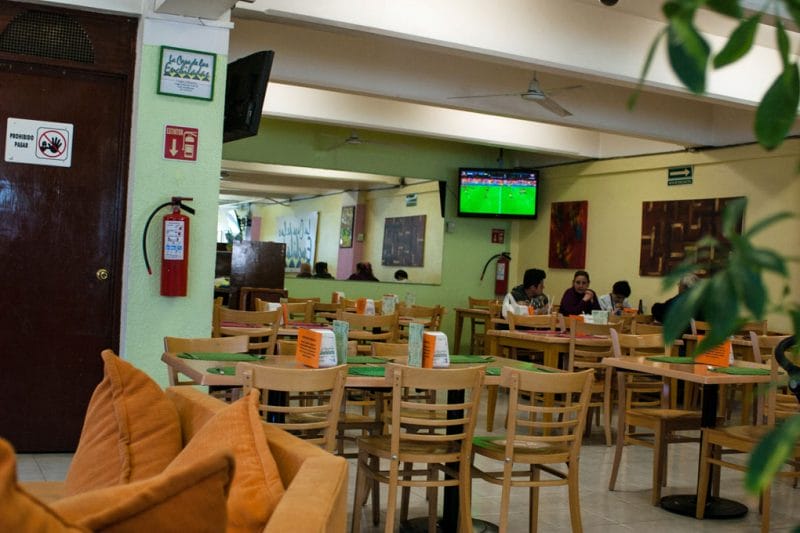
For the ultimate enchilada experience, we get the caporales (the caporal is the highest-ranking official at the ruedo, or rodeo), made with smoky lamb leg roasted in maguey leaves and served with a smooth pasilla salsa, onion rings, cilantro and avocado slices. We love it so much that we have a hard time ordering other kinds when we visit.
La Casa de las Enchiladas started up 13 years ago at the corner of Tokio and Burdeos in the Juárez neighborhood. The business model has been so successful that the owners have opened three more branches around the city. During the week, these restaurants are frequented by office workers and business people, while the weekends find whole families digging into their enchiladas. And why not? There’s something for everyone.
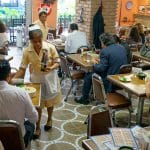 February 23, 2023 Beatricita
February 23, 2023 Beatricita
In a town that runs on tacos, tacos de guisado may be the most ubiquitous version of the […] Posted in Mexico City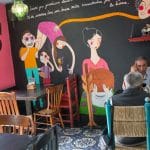 April 17, 2014 El Beso Huasteco
April 17, 2014 El Beso Huasteco
La Huasteca, a region in Mexico that extends through several eastern states, including […] Posted in Mexico City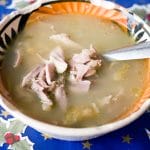 January 16, 2024 Caldos de Gallina Luis
January 16, 2024 Caldos de Gallina Luis
Caldos de Gallina Luis – which a friend had been raving about to us for months before we […] Posted in Mexico City
Published on January 24, 2014
Related stories
February 23, 2023
Mexico CityIn a town that runs on tacos, tacos de guisado may be the most ubiquitous version of the iconic dish in Mexico City. They can be found almost anywhere in the city, from specialty restaurants to markets, tianguis and street vendors selling them at stalls or even out of the trunk of a car. It…
April 17, 2014
Mexico CityLa Huasteca, a region in Mexico that extends through several eastern states, including San Luis Potosí, Veracruz, Tamaulipas, Hidalgo, Querétaro and Puebla, gets its name from the pre-Hispanic civilization that inhabited the area. There are still some indigenous Huastec communities that live in the region, and like those of the rest of the country, their…
January 16, 2024
Mexico CityCaldos de Gallina Luis – which a friend had been raving about to us for months before we finally made it there – is essentially a street food stand that has been trussed up to look more like a sidewalk café. Just a short walk from the Insurgentes metro stop, the venue is located on…







































